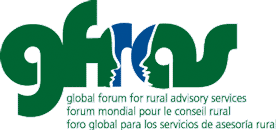An "agriculutre-nutrition gap" exists due to agricultrual development primarily focusing on poverty alleviation and not focusing on producing adequate nutrients to improve the household nutrition. Community development workgers have seen agricultural yields and household incomes increase but high malnutrition is still prevalent in communities where they work (Jayakumar 2014). Women play a key role in maintaining and improving household practices leading to good helath. Additionally, they need adequate groth-nutrients like protein, zinc, sulfur, and magnesium from early childhood onwards and from pregnancy to their children's early childhood. A well-nourished mother can then pass on health benefits to her children particularly in the first 1000 days of life, where lack of nutrition will significally impact a child's ability to fight infections and develop cognitive abilites into their adulthood.
 Every country has developed, formulated, and decreed national policies related to rural advisory services. Find some examples here. If you are looking for a national policy from a specific country, please use the search function, selecting the category “National policies” and the tag for the country.
Every country has developed, formulated, and decreed national policies related to rural advisory services. Find some examples here. If you are looking for a national policy from a specific country, please use the search function, selecting the category “National policies” and the tag for the country.
Wednesday, 09 May 2018 14:31
A Practical Nutrtion Guide for Community Development Workers
Written by Ingrid OliveiraDownload here6711 times downloaded
Published in
Training Resources
Latest from Ingrid Oliveira
- Sustainable Undernutrition Reduction in Ethiopia: Training manual for Health and Agriculture Development Armies
- What Every Extension Worker Should Know - Core Competency Handbook
- Sustainable Nutrition Manual Part 3: Healthy Designs
- Sustainable Nutrition Manual Part 2: Healthy Environments
- Sustainable Nutrition Manual Part 1: Healthy Humans


